
|
| Accept Cookies | Customize | Refuse Cookies |
Lorenzo Crovetto www.juzaphoto.com/p/LorenzoCrovetto  |
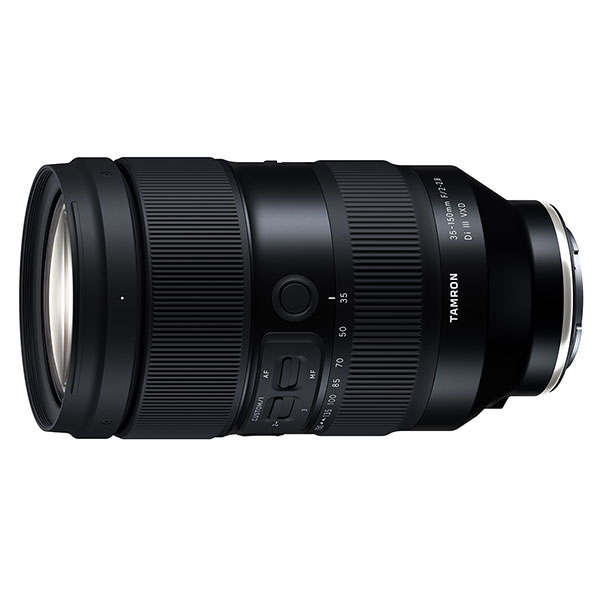 | Tamron 35-150mm f/2-2.8 Di III VXD Pros: Insane edge-to-edge CT sharpness. Fast and quiet. Distortions and aberrations. USB-C socket on the barrel. Resistance to flares. Price. Cons: Weight. Filters from 82. Not stabilized. Opinion: After six months of intensive use in my theatrical work environment, I can begin to paint a picture of this versatile Tamron lens. Starting with the unboxing, the first thing that jumped out at me is the usb-c socket on the barrel. One thing that all third-party lenses should have to avoid using those unbearable plasticky shenanigans in order to update the firmware. Then I immediately notice the excellent lens hood with button lock, the zoom lock and the usual very useful programmable buttons from Sony menus plus the one customizable by Tamron software. The first test I always perform on a new lens is the shift, and fortunately, everything is perfect (and in all honesty I have never found one out of phase for 10 years of doing it.) Then what interests me most about this lens: edge-to-edge sharpness at TA. I bought this zoom exclusively to use it 99% wide open as I work in very precarious light conditions. I do the cityscape with the 35, 55 and 85 Sony 1.8 plus the 35, 75 and 135 Samyang 1.8. All this, of course, at the aperture from which the Tamron starts, i.e. f2.0 at 35mm, f2.2 at 55mm, f2.5 at 75mm and f2.8 at 85mm. And it's incredible, really unbelievable how it manages to eat both at the edges and in the center all the lenses mentioned above except one. the Samyang 135 lens of excellent quality maybe just a little below the GM. It's a result that I didn't expect, especially at the edges, and especially at TA. It practically nullifies a set of good level fixtures. I then prepare some quick shots on metal surfaces and notice the presence of a modest fringing but nothing more. The distortion of the lines over the entire range is also excellent, very little evident. On the labor field, in these six months, he has proved to be majestic. its VXD engine combined with the tracking of my A7IV never made me miss a shot. Very fast and very important to me, quiet. Nice soft zoom with a range of about 1/4 turn to cover all focal lengths. Excellent resistance to flares considering that in many situations I have headlights and spotlights shot at. Very nice blur but obviously not poetic as a 1.4 lens can be. I can also try to find some cons. The weight and size certainly feel. Especially if there isn't a batterygrip that shifts the balance a bit. I've always tolerated external zooms but with this focal range the miracles probably couldn't be done. Filters from 82. The good ones are very expensive. It's not stabilized, but the one in the room works very well. In conclusion, for me and for those who, like me, deal with reportage, weddings, theater and concerts, this lens is a real game changing. Paid 1350 euros import (thanks also to the release of the twin Samyang) it is a product that I would over-recommend. sent on February 12, 2024 |
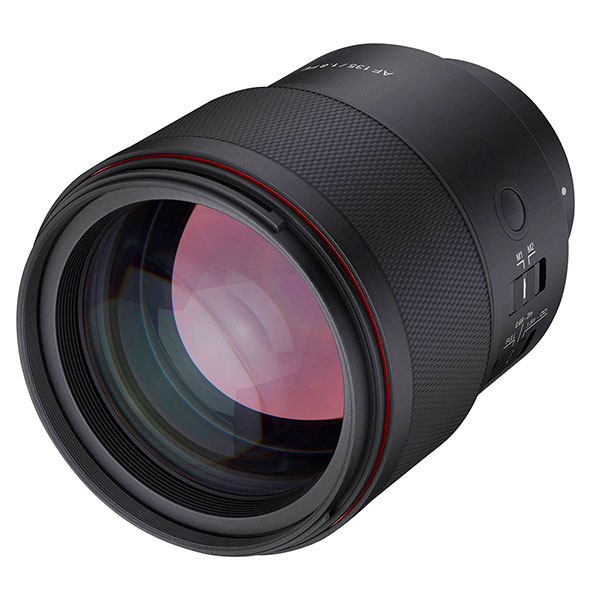 | Samyang AF 135mm f/1.8 FE Pros: A TA blade. Creamy bokeh. High performance AF (on A7IV). Custom buttons. Tropicalized. Cons: The weight is felt. 82mm for good filters is quite an outlay. Opinion: Third Samyang lens that is added to my Sony kit. It's curious but until a few years ago I hated this brand for the very poor optics it produced for Nikon and Canon. the quintessence of optical defects. Yet with the AF line they churned out an excellent 35mm and a superb 75mm, both taken at ridiculous prices. I waited for Amazon's Black Friday, a wonderful event to buy lenses of this house, taking it away for 769 euros. Opening the box I confess I expected a nice hard case as for the 35 and 75 but here the dimensions begin to be really important and such a package perhaps was not possible. But I notice a hood finally as God commands. Solid with precise engagement and with a nice rubber edge. After the terrible one of 75 it is already a good start. Even the invoice, although the barrel is made of plastic, is far from the cheap look of the younger brothers. Excellent to the touch the soft focus ring. Then I find a custom button to which I dedicated the AF / MF switch, the selector to switch the AF ring in the ring for the aperture, which I honestly do not use, and the selector for the MAF limit. Useful in studio portraiture sessions. Then there is a LED on the base of the mount which as I read indicates that the Astro-Focus mode during night shooting is easily identifiable. The first test I always perform is to check if the lens is off-center as the good Phillip Reeve teaches. Now in all honesty in the last 10 years with almost eighty lenses between Nikon, Sony, Sigma, Tamron and Samyang I have never found one completely out of phase. And this 135 is just perfect on all four corners. The sharpness test on urban environment is also crazy. At TA from edge to board you eat my Tamron 70-200 2.8 G2 closed at 5.6. And without any distortion. So I prepare a small portrait shooting set. An alpine road with beautiful orange larches of late autumn. And the warm light of sunset. It is in this type of full-length shots and full aperture that I love to use this focal length. And Samyang does not deny any of its potential. Creamy bokeh with a break between subject and background wonderful. None and I say no chromatic aberration. AF and Eye Detection beautiful reactive decidedly above average (thanks also to my fantastic A7IV) and a sharpness of the subject to TA remarkable. Maybe if I have to find the hair in the egg I expected a greater three-dimensionality, but equaling a Leica lens from 5000 euros would have been really outrageous ... :-) Is there any downside? The weight, 770 gr are not easy to balance without a battery grip. Having to work for whole days with important lenses is a fundamental accessory for me. The diameter. Good 82mm filters begin to have a price not really for all budgets. Ultimately a WONDERFUL lens, usable in various types of photography, from urban landscape and not to macro set (69 cm minimum maf) to the portrait set. Probably today the spearhead in the Samyang house. And one of the best I've ever worked with. And at 769 euros at Sony, letting it escape is a crime. sent on December 05, 2022 |
 | Meyer Gorlitz Orestor 100mm f/2.8 Pros: Size, Weight, Excellent Blurry. Excellent mechanics. Cons: He suffers from flares and a little cartoon with closed diaphragms. Not so etched into sharpness. Opinion: I was curious to see for you how this 100mm has always been so underestimated compared to its 14-bladed mid-60s diaphragm counterpart. I found a wonderfully mint specimen. Barrel, lenses, mechanics, all in excellent state. I started the tests in portraiture in the studio and I was surprised to see a decent clarity on the subject even at TA. I was expecting a very very soft lens but luckily that wasn't the case. Excellent blurry, soft with delicious bubbles on the lights. Obviously not as flashy as in the Trioplan but equally intriguing. Closed to f4 for me becomes a perfect canvas medium. Crisp with a bokeh always very pleasant. Outside in the architectural field, however, it left me a little perplexed. I knew it couldn't resist the flare much and I obsessed with a nice 49mm lampshon easily available making me gain even in contrast. But a certain vignetting over f8 I didn't expect. It seemed very marked to me. (with and without a lampshed of course). A few small chromatic aberrations, average for this type of vintage optics (I tried modern optics put much worse) and a sharpness from f8 to f11 not so incisive. On the other hand, my Sonnar, which has 35mm more, destroys it. Excellent instead the chromatic rendering and distortions practically absent. The dimensions are very compact as well as the weight of only 280gr. Mechanics never uncertain with beautiful fluid rings. The Orestor as a whole is a great portrait lens. Comparing my results with those found on the 14-blade brother's network I didn't notice much difference in overall image quality. Yes, the latter is certainly more pleasant to the eye with its zebratura and for the beautiful almost circular diaphragm with 14 blades operated by a diaphragm ring placed on the top of the lens, a ring that was subsequently set back at the height of the graft flange. But if these features are not fundamental I would say that their optical behavior is very very similar. sent on May 16, 2021 |
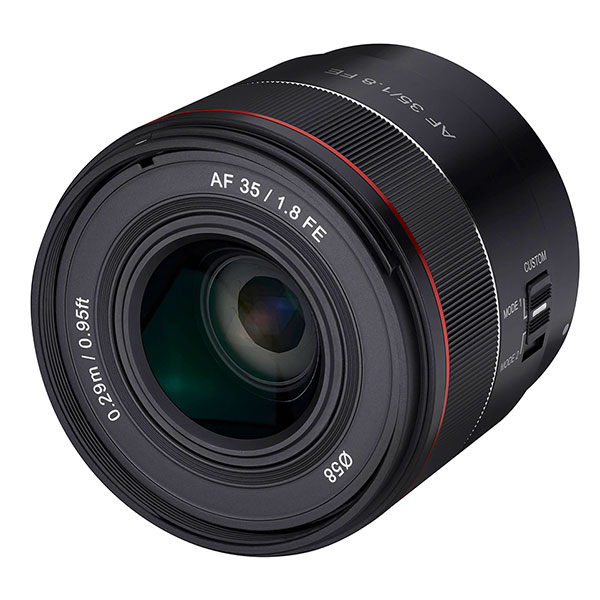 | Samyang FE 35mm f/1.8 AF Pros: 210g weight and 300 euros import. Excellent optical performance. AF never uncertain. Minimal pleasant look. Cons: A little bit of chromatic aberrations, cheap touch materials, 0.29m of minimal focus, Samyang lampsheds can't see them... Opinion: I love this new Samyang line. I flanked this lens to the big brother the 75mm. Many of the considerations are practically the same as I reported in previous opinions: Good packaging, a feeling of very cheap materials, a very pleasant minimalist look and aggressive import price around 300 euros. It is a lens that I mainly use for the set portrait and architectural compositions. I therefore needed a very light and contained lens to be side by side in the bag with other fixed, and very performing ta. Of course, there are some compromises at this price. It suffers a little bit from chromatic aberrations that can be easily eliminated in posts and at TA up to f4 the image at the edges is not really very sharp. Then it takes off and settles on a very good result. The distortion is also really contained. It's a type of lens that I could also use for TA-set macros but 0.29m of minimal focus isn't exactly optimal for my kind of shots, a 0.20 would have been great. In the portrait, however, I find it as for the older brother, excellent. Creamy bokeh and sharp beautiful image for almost the entire frame already from f1.8. Responsive AF and eye detection always perfect. Of the feature of commanding the focus ring (which, moreover, has an excellent response in manual as for the 75mm) for the iris opening, personally, I care very little. It should be further customizable with the dock. This 35mm belongs to one of the most successful lines of economic optics in recent years. and with the 24mm coming up you can create a respectfully respecting set kit. sent on April 10, 2021 |
 | Voigtlander Color-Skopar X 50mm f/2.8 Pros: Color fidelity. Crisp from edge to edge. Weight and size. Excellent construction. Cons: A little soft at TA. DKL attack. Small small focus ring. Opinion: The Color Skopar–x f2.8 is a "standard" lens created for the Bessamatic series. I found a specimen paired with the Bessamatic Deluxe in such a perfect condition both aesthetic and mechanical as to seem to have come out of the box yesterday. It uses the DKL attack, not really widespread, and with some difficulty I found the correct adapter for my Techart. Adapter that must necessarily have the diaphragm ring as this type of lens uses a Synchro-Compur shutter mounted behind the lens, with this system, only the shutter speed can be changed on the lens itself, but if you want to cancel it and select a different f/stop, you can use the ring around the rewind knob. I knew the reputation of this set of lenses in giving very natural colors, faithful, and extremely sharp images. Intrigued I organized a quick shoot in an interior where the model was struck both by a cold natural light and by a reflected artificial hot light. And I was surprised by the perfect color response. As well as the almost total absence of chromatic aberrations and vignettes. It's not really a TA blade but it still returns a pleasantly soft subject. A closed wire and in the center the sharpness begins to be well perceptible and, then on intermediate diaphragms the frame is perfect from edge to edge. On a construction level it is magnificent, tiny and chromed, it weighs only 140 gr but you can perceive a great solidity. Given the small size, it's not really easy to operate on the focus ring. 40.5mm lampshon also this not easy to find chrome but luckily I had one for the Jupiter 9. In short, a small lens with great optical performance that gives a great shooting pleasure going back in the time of almost sixty years. sent on January 30, 2021 |
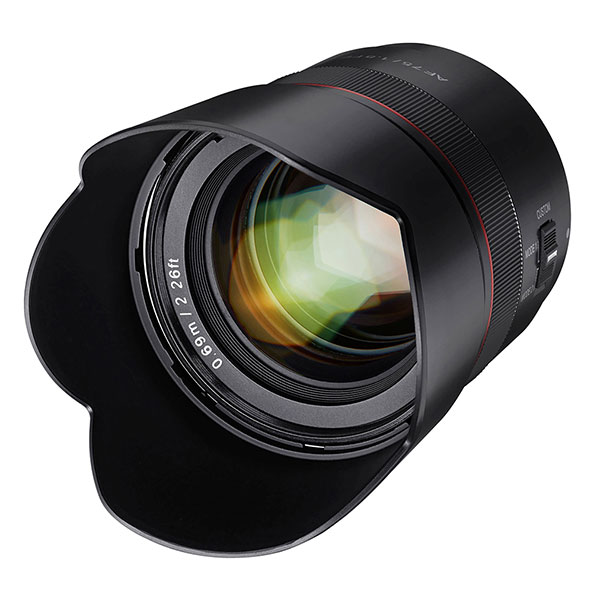 | Samyang 75mm f/1.8 AF Pros: TA image quality. AF above average. Customization of the focus dial. Fantastic import price. Light and small in size. Cons: A little "cheap" in materials. Indecent lampshade. Opinion: The "little" Brands, the less emblazoned ones, for a couple of years tend to amaze me starting from the small things. Like packaging. I open the box and find myself the lens sealed inside a case as rigid as that of the glasses. A solution I hadn't seen yet. However, I had few expectations about the construction given the import price of 309 euros. And in fact I had a very, very cheap feeling. A feeling of Chinese plastichina. Like the really obscene lampshade. In short, I did not expect a Sony Sonnar but something of a more robust thread maybe yes. The design of this new Samyang line is pleasant to the eye. Very minimalist. But at the end of the day, it's the glass that counts, and here we are. And a lot. When I buy a portrait lens at 1.8 to 90% I use it in TA or a more closed wire. And I want you to give me a great result already. And this little, light Sammy succeeds. It's clear. Damn sharp. And fast. It will also be the miraculous AF of the AIII but does not miss a blow on the eyes even in the presence of glasses. Moving from the eyes to the background and vice versa I found a certain responsiveness, not miraculous but already above average. Pleasant and creamy the blurry, a little tending to warm tones the image. However, we are talking about a lens that is on the market between 350 and 310 euros. Certain results are double-priced if not triple. Of the feature of commanding the dial of the focus (which also has a very good response in manual) for the aperture diaphragm, personally, I really do not care. It should be further customizable with the dock. I am happy that the market has opened up to such excellent third-party lenses at human prices. I was amazed by Tamron with the 45mm 1.8 and the superb 70-200 2.8 G2 and today I was amazed by Samyang with this line, a little cheap on the barrel materials but with character lenses. I would say over-recommended! sent on September 24, 2020 |
 | Konica Hexanon AR 57mm f/1.4 Pros: 57mm perfect for portraiture. Excellent construction. Sharp from fear just closed to f/2. Cons: Knowing that these lenses no longer exist... Opinion: Magnificent lens, perhaps today little used and preferred to more 'emblazoned manual lenses on the market. Very sharp in the center and extremely high performance at the edges. Definitely better than the Minolta Rokkor 58mm to which however I prefer the creamier and softer blush. It's amazing how a 60s lens can play with modern portrait lenses on the same shot. On the same series of studio shots, I finally preferred those born from Konica. Three-dimensionality, contrast, color toning, all really over the top. Strong, heavy construction, it is a pleasure to ercherate on its fluid and precise dial. The only downside, at least for me, is the not-so-pasty bokeh as the Minolta, although in any case decidedly unique. They are both excellent lenses and it is, in fact, really difficult to prefer one over the other. Finding it on the Bay at a price close to the centennial shouldn't be a problem. A purchase definitely recommended and bearer of creative satisfactions. sent on June 06, 2020 |
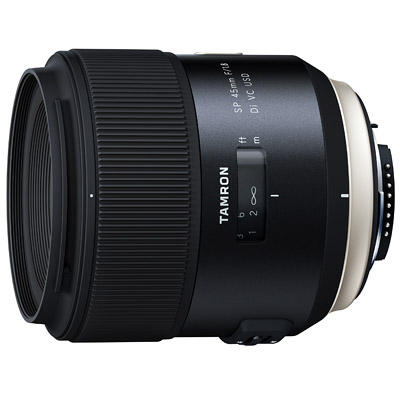 | Tamron SP 45mm f/1.8 Di VC USD Pros: Price import, tropicalized, stabilized, darn sharp. Cons: It will remain permanently inserted into your machine. Opinion: Tamron with the new G2 line has amazed me in time. I didn't think it could get to the levels of the most ephaled brand. I thought again working almost daily with the magnificent 70-200 G2. Then I tried the 35mm f1,4, which I found superb, prompting me to sell the sigma art. Finally out of sheer curiosity I took this 45mm at the ridiculous import price of 275 euros. Massive lens, well built, light years away from the plastic cinesateofs of previous Tamron (which I had and immediately eliminated). Not very fast, it is a lens dedicated to certainly non-sporting genres, cuts like a razor just closed over the f2 with a creamy bokeh very pleasant. I started playing in the studio, then outdoors and in the end in the last 20 days she was hooked on one of my reflexes giving me excellent results. I think it can give great surprises even in the macros set, maybe in TA, having a minimum focus distance of 0.29. Finally the stabilizer allowed me shots without micromove on times around 1/20 and in support up to 1/8. Remarkable, at least to me that I have no granite hand at all. The only downside, the triggering of the lampshade not exactly accurate. But it's a trifle. In conclusion I found it surprising that this "small" lens can churn out images very, very close to a sigma art 50 (tried on many occasions), which is a brighter thread but not stabilized nor tropicalized or more 'responsive, at a fraction of its price. Give it to her, you won't regret it. sent on January 04, 2020 |
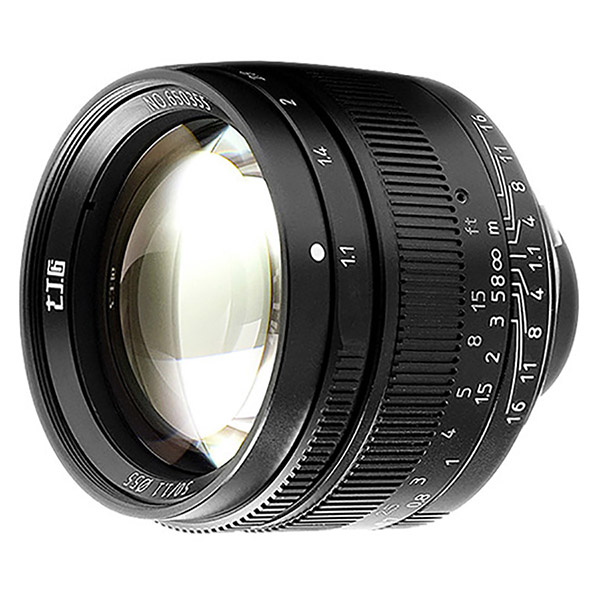 | 7Artisans M50mm f/1.1 Pros: Aperture 1.1, construction, de-click diaphragm, blurry. Cons: Vignette at all apers even at F/8. Non-existent image edges even at closed diaphragms. Opinion: Let's start with the packaging. 7artisans is a Chinese home but it succeeds in small things to amaze. The big brands or those emblazoned as voigtlander a box so they can only dream about it. You open it and you start to believe that under the doors there really is a Chinese noctilux. I omit the accessories for Leica with rangefinder as I will use it on Sony, but there are and indicate professionalism, extract the lens from its casing and perceive a wonderful solidity. Perfectly fluid ring and de-click soft diaphragms that I like even if I know that many prefer to orient themselves with the sound of the click. Practically to the perfect feel. Then I start testing the urban landscape. And it's a disaster. Any of my vintage lenses eats it. To all openings. I'm just quoting the Minolta Rokkor 1.4 and the Canon FD 1.4. Lenses from about sixty euros. 7artisans holds just a little at the center but loses miserably detail on all edges also closed to F/8 and this I find puzzling. Always Vignettando. I go back to the studio and I try some bokeh on still life and at least a little joy comes back. Delightfully creamy at 1.1 although with a very soft image that remains at least up to F/4. Chromatic aberrations as if there was no tomorrow. In short it is a very beautiful lens and from the import cost quite insignificant. For a purely blurred use on very very artistic or in very poor light conditions. Forget other areas. To f 1.4 Any other lens and I say any, the outclass. And No... I have not found the Chinese Noclilux...:D sent on April 28, 2019 |
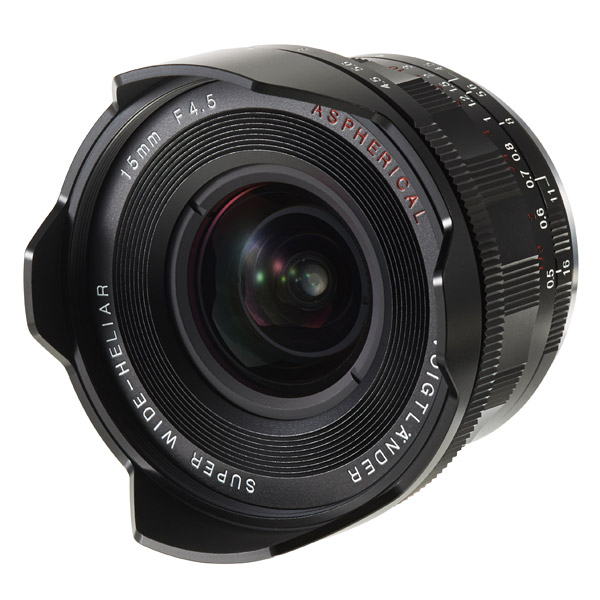 | Voigtlander Super Wide Heliar 15mm f/4.5 Pros: Build Quality, sharpness on almost all the frame already a TA, compact dimensions, good resistance to flare, screw filters from 58mm. Cons: Vignette and not a little. A little purple fringing. The VM version does not have the de-click function on the E. Opinion: It's a wonderous lens. So Compact that it can be kept in your pocket. Built with a wonderful metal body and integrated lens hood not detachable. I have Not noticed virtually any distortion and for a 15mm I find it extraordinary. Pretty Sharp already at TA (f/4.5) on almost any frame except the end of the edges just a soft thread. Damn well Resists to flare, definitely better than my Nikon 16-35 F4 and 20 1.8 G. Having 10 diaphragm blades produces beautiful and razor-sharp 10-beam stares. Add the possibility of using screw filters, maybe 58mm slim, and you will have a must for landscape and architecture to always keep and I always say in the bag. sent on April 03, 2019 |
 | Meyer Gorlitz Telefogar 90mm f/3.5 Pros: Wonderful lens for portraiture, as can be seen from the galleries below...:D Cons: Against? Let's not kid ourselves... Opinion: I have a barrel copy modified to M42. I use it exclusively for portraiture in the studio and often outdoors on both Nikon and Sony. It's a magnificent lens already at TA. Closed by a stop reaches perfection. It has an adorable vintage stamp. I think along with the Lydith 30mm is one of the best Meyers ever built. Try it because you might fall in love right away... sent on December 22, 2018 |
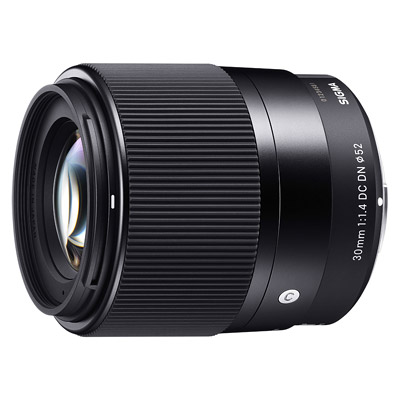 | Sigma 30mm f/1.4 DC DN C Pros: The usual wonderful optical quality of Sigma. The price. Cons: The usual indecent Sigma electronics. It distorts a little. Opinion: As a Nikon user I had, used and tested a lot of Sigma optics. The only optics left in my kit is the wonderful 35 art and it is also not free from defects. But I love it and I keep it. I was very intrigued by the younger brother for the Sony system and I wanted to take it. Superlative in optical quality, it can be sharper than the 35 art at the edges at any aperture. Obviously tested both on a6000. And that definitely surprised me. What I have not surprised is the uncertain behavior of AF. In the Single-shot AF to infinity mode is too fallacious. In that continuous AF fortunately it fades. I do not think it is a problem of my a6000 since the Sony optics are not wrong a shot in any mode. In conclusion It is the lens that despite its flaws I practically never break. With its opening of 1.4 it allows to be creative in many photographic typologies. Very recommended lens But like all sigmas you hardly find the perfect specimen. sent on April 18, 2018 |
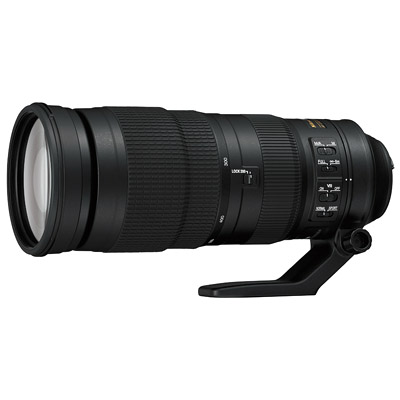 | Nikon AF-S Nikkor 200-500mm f/5.6 E ED VR Pros: AF and VR across. Weighs practically nothing. Really affordable cost. Cons: The building is not like the big brothers and I would also like to see, it costs 1250 € ... Hood too plasticky. Opinion: I tried them all in oasis. Tamron, Sigma Sport and my Sigma 120-300 2.8 sports and Nikon 300 f4. It outclasses them all for speed stabilization (that is miraculous) and sharpness. (The 120-300 is a hair above for definition but only for that). The weight for me used to almost 4 Kg of the Sigma is ridiculous, I can take it in hand all day without getting tired. Moles are obvious, is not weather sealed, the construction is not sublime and the ridiculous hood. However it offers a lot and is worth every penny. sent on January 24, 2016 |
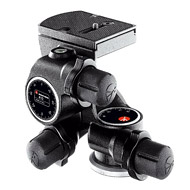 | Manfrotto 410 Pros: Absolute precision, price. Cons: A little heavy but not too much. For a few types of photos. Opinion: By now I always use, it has become one of my fundamental to take forever, but coupled to a Manfrotto carbon fiber in order to have a total weight acceptable. To compose superb macro, landscapes long exposure and all that can 'be photos from the studio. rnIl system allows micro movements that my ball head Manfrotto can always' only dream of. Of course you can not follow a hawk swooping ...:-) sent on September 19, 2014 |
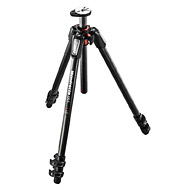 | Manfrotto MT 055 CX PRO3 Pros: Wonderfully light. Robust and accurate. Excellent opportunity to use the center column horizontally. Cons: Too bad they can not use the column, when horizontally, turned 180 ° rnPer the rest no defect. Opinion: This superb stand. To me that is an essential tool, move less than 2kg is a great thing especially when I have a big lens behind by 4kg. The use both with a micrometric head that ball. The idea of ??being able to use the center column horizontally is very useful in some situations macro. Packed with thousands of accessories (expensive, too much for me) is transformed into a mini mobile studio. Highly recommended. sent on July 31, 2014 |
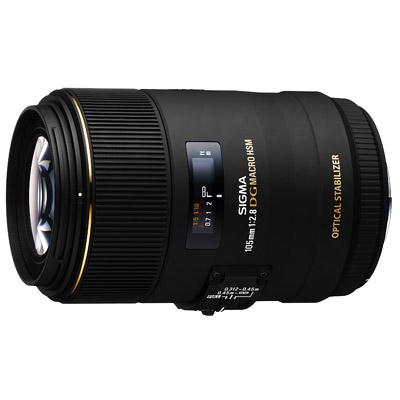 | Sigma 105mm f/2.8 Macro DG OS HSM Pros: Price, Defocused excellent, Weight, Perfect combination with the Sigma teleconverter. Cons: Nothing important, perhaps the function keys will reveal a little uncomfortable. Opinion: At first glance surprising weight, really light, fortunately this is not synonymous with poor construction. The optimal allocation, from the hood to the format APS-C and FF to the bag rigid. Amenities (identical to my other Sigma 120-300). Taking a few hundred test shots we see a great Bocken and a very precise AF. In fact, coupled with the Sigma 1.4 Teleconverter autofocus becomes even more 'accurate. Stabilizer okay, but personally I feel little need treppiede.rnParagonato often using my other optical Nikon macro lens comes out strongly in this head-on. sent on July 03, 2014 |
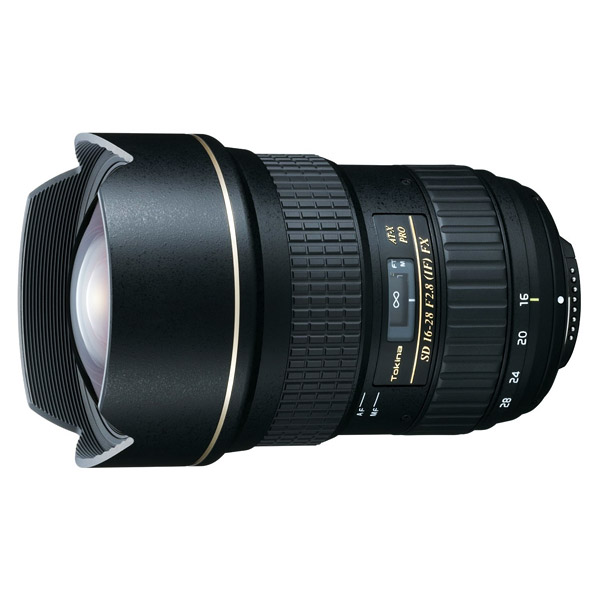 | Tokina AT-X 16-28mm f/2.8 Pro FX Pros: This razor really slow, strong and clear, but it is a normal AF lens basically the landscape. And certainly the price, paid less than € 700 could be worth the quality of the equivalent Nikon ... Cons: The weight feels, the dial to the MF I find it horrible to put a simple button, and basically the fact that you can not use any filter ... Opinion: I used the Tamron 17-50 for a few years with little satisfaction, then I noticed a few photos with this Tokina that few possess. It seems to get on another planet. Great sharpness and after the f5.6 becomes excellent, virtually no aberration vignettatura.rnPenso that it is an objective exceptional landscaping. I'm curious to see how it behaves in the night where I have not yet experienced. sent on April 06, 2014 |
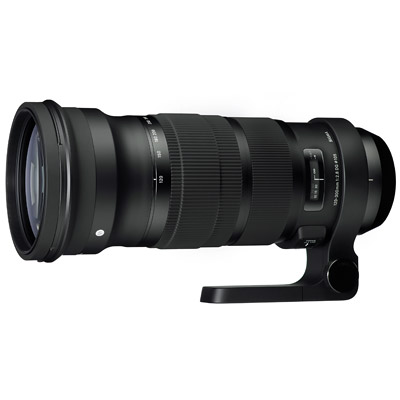 | Sigma 120-300mm f/2.8 DG OS HSM S Pros: Sharpness, AF very fast, great price Cons: Weight, duplicate 2x AF begins to be uncertain Opinion: I use it for a few months, really good and sharp at 5.6. The AF does his duty without ever being uncertain, it loses a bit 'performance with his Sigma 2x. Great stabilizer. That is all it costs € considering they are half the weight of an equivalent Nikon.rnPer frankly I'm used to, it is certainly not a feather. sent on February 06, 2014 |
 JuzaPhoto contains affiliate links from Amazon and Ebay and JuzaPhoto earn a commission in case of purchase through affiliate links.
JuzaPhoto contains affiliate links from Amazon and Ebay and JuzaPhoto earn a commission in case of purchase through affiliate links.May Beauty Be Everywhere Around Me